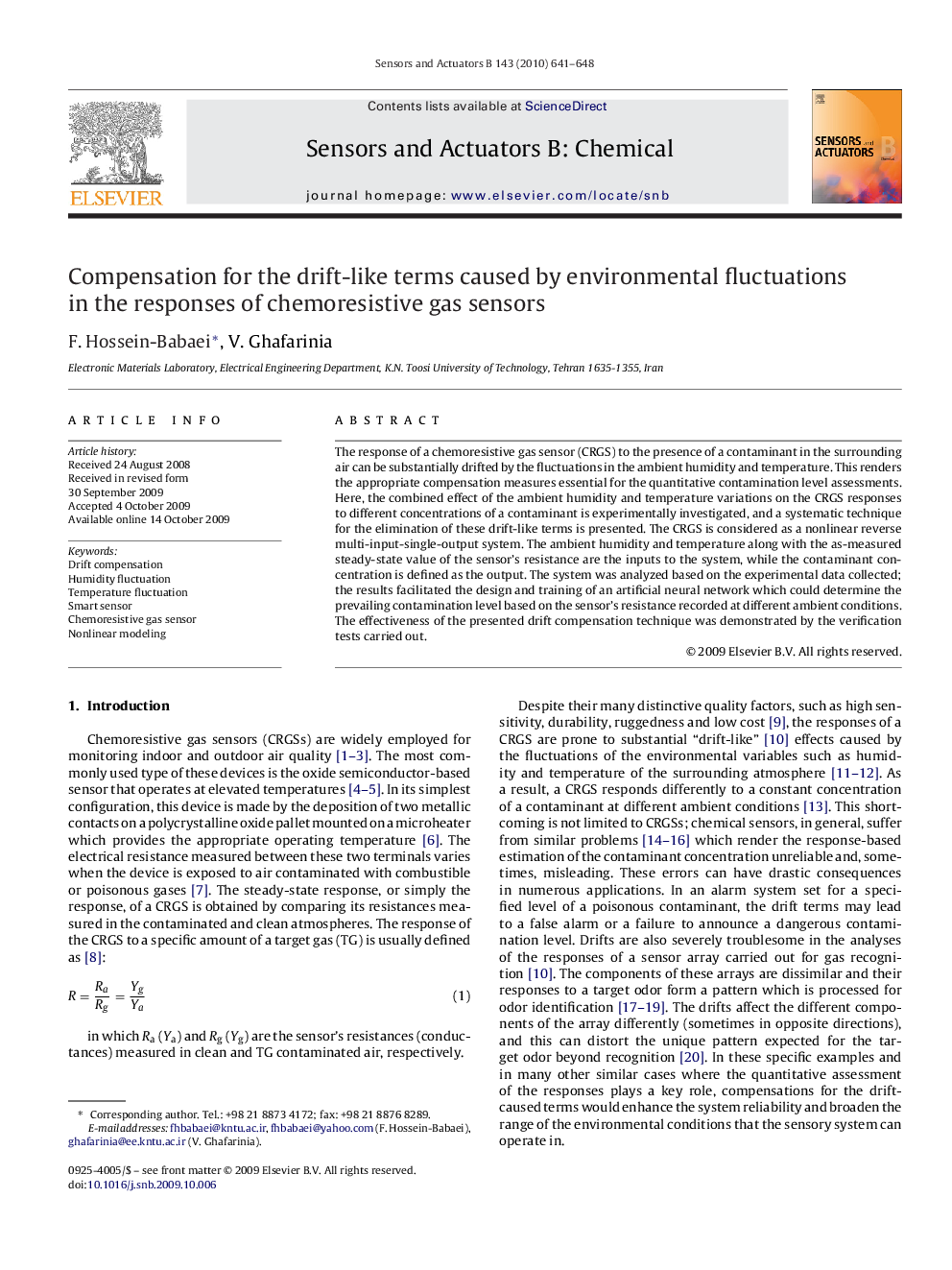| Article ID | Journal | Published Year | Pages | File Type |
|---|---|---|---|---|
| 742992 | Sensors and Actuators B: Chemical | 2010 | 8 Pages |
The response of a chemoresistive gas sensor (CRGS) to the presence of a contaminant in the surrounding air can be substantially drifted by the fluctuations in the ambient humidity and temperature. This renders the appropriate compensation measures essential for the quantitative contamination level assessments. Here, the combined effect of the ambient humidity and temperature variations on the CRGS responses to different concentrations of a contaminant is experimentally investigated, and a systematic technique for the elimination of these drift-like terms is presented. The CRGS is considered as a nonlinear reverse multi-input-single-output system. The ambient humidity and temperature along with the as-measured steady-state value of the sensor's resistance are the inputs to the system, while the contaminant concentration is defined as the output. The system was analyzed based on the experimental data collected; the results facilitated the design and training of an artificial neural network which could determine the prevailing contamination level based on the sensor's resistance recorded at different ambient conditions. The effectiveness of the presented drift compensation technique was demonstrated by the verification tests carried out.
